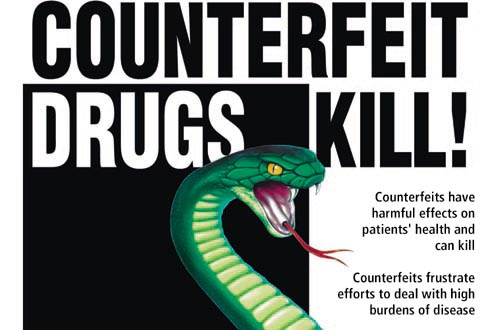
Being in the cause of stopping counterfeit drugs, we at The Peterson Group also have challenges on how to differentiate between counterfeit drugs and legit ones. We know you are also in the same page as we are. In response to this, Food and Drug Administration released some factors in knowing and recognizing counterfeited drugs.
Of course, there are sometimes very obvious telltale signs of counterfeiting faulty spelling, for example, incorrect packaging or tablet size.
Yet counterfeiters are fast becoming better at replicating genuine drugs correctly, and are increasingly sophisticated when mimicking specific anti-counterfeit measures such as brand logos. This has pushed manufacturers to enhance anti-counterfeit technology. Hopefully, these methods have already reached developing cities such as Kuala Lumpur, Malaysia, Jakarta, Indonesia and Bangkok Thailand to prevent the growth of drug counterfeiting in those places. May the following be a warning to all of us:
1. Visible markings
Medicines can be marked in ways that make it easy even for consumers to identify frauds. For instance, packets and bottles can have tamper-evident seals. And like banknotes and credit cards, medicines can be marked with embossed graphics or holograms security inks that change in color according to the angle they are viewed at.
2. Invisible markings
These are usually identifiable only to the supplier or distributor, not the consumer. They make use of invisible inks that can be detected in UV light, digital watermarks that encode data in graphics, anti-scan designs that reveal a watermark when copied, or inks imbued with specific micro-encapsulated odors.
3. Forensic labeling
Manufactures can use 'lock and key' systems, applying specific biological or chemical tags, such as DNA, that are not detectable by standard analysis and can only be revealed by specific reagents. Other forms of tagging can include silicon dioxide micro or nano tags, applied to the surface of a pill, that emit a unique light signature.
4. Track and trace labeling
In this system, each pharmaceutical package is uniquely labeled either with a barcode or some other non-sequential unique number. The label should then be read at the final point in the supply chain, when a pharmacist dispenses medicines to a consumer. This helps to ensure drugs are genuine and not past their expiration date. A more complex system is radio frequency identity (RFID) tagging, in which the tag is an antenna with a microchip. This means that the data can be read at a greater distance and do not need to be scanned like a barcode.
5. Scratch and Text
Sproxil has developed a simple and quick way to fight counterfeits in developing nations. The start-up attaches each packet of drugs a unique identification code that is concealed by a foil coating. When a consumer get a medication, he should scratch the coating and text messages the unique ID number in Sproxil’s database. Within seconds, the person receives a reply indicating whether the drug is legitimate. Sproxil is testing system in Nigeria, Kenya. You can then find a complaint afterwards.
6. Medicines Quality Database
Information may be one of the best weapons in the war of counterfeits. Earlier this year, the US Pharmacopeial Convention made public a database that includes information on nearly 9000 drug samples that were collected and tested from Africa and South East Asia. The MQDB provides information on where drugs where collected, how they were tested, whether they were legitimate and how authorities responded to instances of poor quality medicine.

